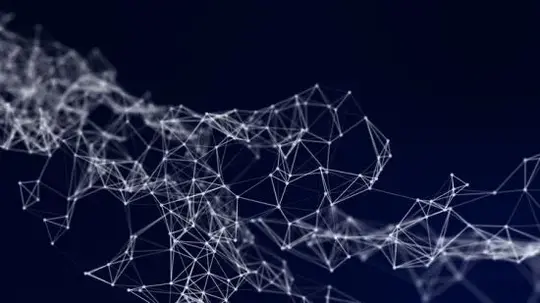Parallel processing with desktop computers for GIS
Best practices for Esri's GeoAnalytics Desktop and Postgres/PostGIS

What you'll learn
Learn about parallel processing options for GIS on desktop PCs
Learn about the hardware considerations for using large amounts of data in GIS
Learn about the software considerations for using large amounts of data in GIS
Learn about best practices for structuring data spatial and attribute data when working with large amounts of data in GIS
utilize GeoAnalytics Desktop and PostGres/PostGIS to process large amounts of geospatial data in ArcGIS Pro
Requirements
Students should have some familiarity with GIS.
Should have a general knowledge of databases.
Interested in using parallel processing in their GIS tasks.
Description
Did you know that you can leverage parallel processing using your desktop computer?
If you are moving into a territory in your GIS career where the amount of data you are using prevents you from doing your job effectively, this course is for you. We'll focus on the best practices for using large data sources and the new offering by Esri and open source tools to parallelize geospatial tasks. Esri's GeoAnalytics Desktop tools and Postgres/PostGIS provide a parallel processing framework for GIS analysis using your existing PC. Most PCs today have 8 or more processing cores (CPUs). The use of Apache Spark in GeoAnalytics Desktop and the use of worker processes in Postgres turns your desktop PC system into a mini high-performance computing lab. The tools are so well integrated in ArcGIS Pro that they operate in the same way as other geoprocessing tools in ArcGIS. And, while Postgres requires a little more thought, the flexibility it offers provides really exceptional speed for handling large data analysis projects.
While parallel processing tools exist, they may be severely ineffective unless you properly utilize the hardware, software, and data on your computer. This class will introduce you not only to the actual features in GeoAnalytics Desktop and Postgres, but also some of the best practices when working with hardware, software, and data. Some of the topics we'll address include
hardware considerations for working with large spatial data.
classes of databases to store large spatial data.
working with different coordinate systems with large spatial data.
indexing strategies for improving the speed of database searches.
formatting GIS data to improve spatial analysis.
You will have an opportunity to not only learn about the theoretical topics of large spatial data analysis, but you'll perform hands on activities to test the processes yourself. This is the perfect course to get you ready for working with large amounts of spatial and non-spatial data.
Who this course is for
Students who have a desire to learn about the best practices for handling large amounts of spatial and non spatial data in GIS processes.
MP4 | Video: h264, 1280x720 | Audio: AAC, 44.1 KHz, 2 Ch
Language: English | Duration: 3h 5m | Size: 2.32 GB
Download
http://s9.alxa.net/one/2024/10/Paral...rs.for.GIS.rar
Best practices for Esri's GeoAnalytics Desktop and Postgres/PostGIS

What you'll learn
Learn about parallel processing options for GIS on desktop PCs
Learn about the hardware considerations for using large amounts of data in GIS
Learn about the software considerations for using large amounts of data in GIS
Learn about best practices for structuring data spatial and attribute data when working with large amounts of data in GIS
utilize GeoAnalytics Desktop and PostGres/PostGIS to process large amounts of geospatial data in ArcGIS Pro
Requirements
Students should have some familiarity with GIS.
Should have a general knowledge of databases.
Interested in using parallel processing in their GIS tasks.
Description
Did you know that you can leverage parallel processing using your desktop computer?
If you are moving into a territory in your GIS career where the amount of data you are using prevents you from doing your job effectively, this course is for you. We'll focus on the best practices for using large data sources and the new offering by Esri and open source tools to parallelize geospatial tasks. Esri's GeoAnalytics Desktop tools and Postgres/PostGIS provide a parallel processing framework for GIS analysis using your existing PC. Most PCs today have 8 or more processing cores (CPUs). The use of Apache Spark in GeoAnalytics Desktop and the use of worker processes in Postgres turns your desktop PC system into a mini high-performance computing lab. The tools are so well integrated in ArcGIS Pro that they operate in the same way as other geoprocessing tools in ArcGIS. And, while Postgres requires a little more thought, the flexibility it offers provides really exceptional speed for handling large data analysis projects.
While parallel processing tools exist, they may be severely ineffective unless you properly utilize the hardware, software, and data on your computer. This class will introduce you not only to the actual features in GeoAnalytics Desktop and Postgres, but also some of the best practices when working with hardware, software, and data. Some of the topics we'll address include
hardware considerations for working with large spatial data.
classes of databases to store large spatial data.
working with different coordinate systems with large spatial data.
indexing strategies for improving the speed of database searches.
formatting GIS data to improve spatial analysis.
You will have an opportunity to not only learn about the theoretical topics of large spatial data analysis, but you'll perform hands on activities to test the processes yourself. This is the perfect course to get you ready for working with large amounts of spatial and non-spatial data.
Who this course is for
Students who have a desire to learn about the best practices for handling large amounts of spatial and non spatial data in GIS processes.
MP4 | Video: h264, 1280x720 | Audio: AAC, 44.1 KHz, 2 Ch
Language: English | Duration: 3h 5m | Size: 2.32 GB
Download
http://s9.alxa.net/one/2024/10/Paral...rs.for.GIS.rar